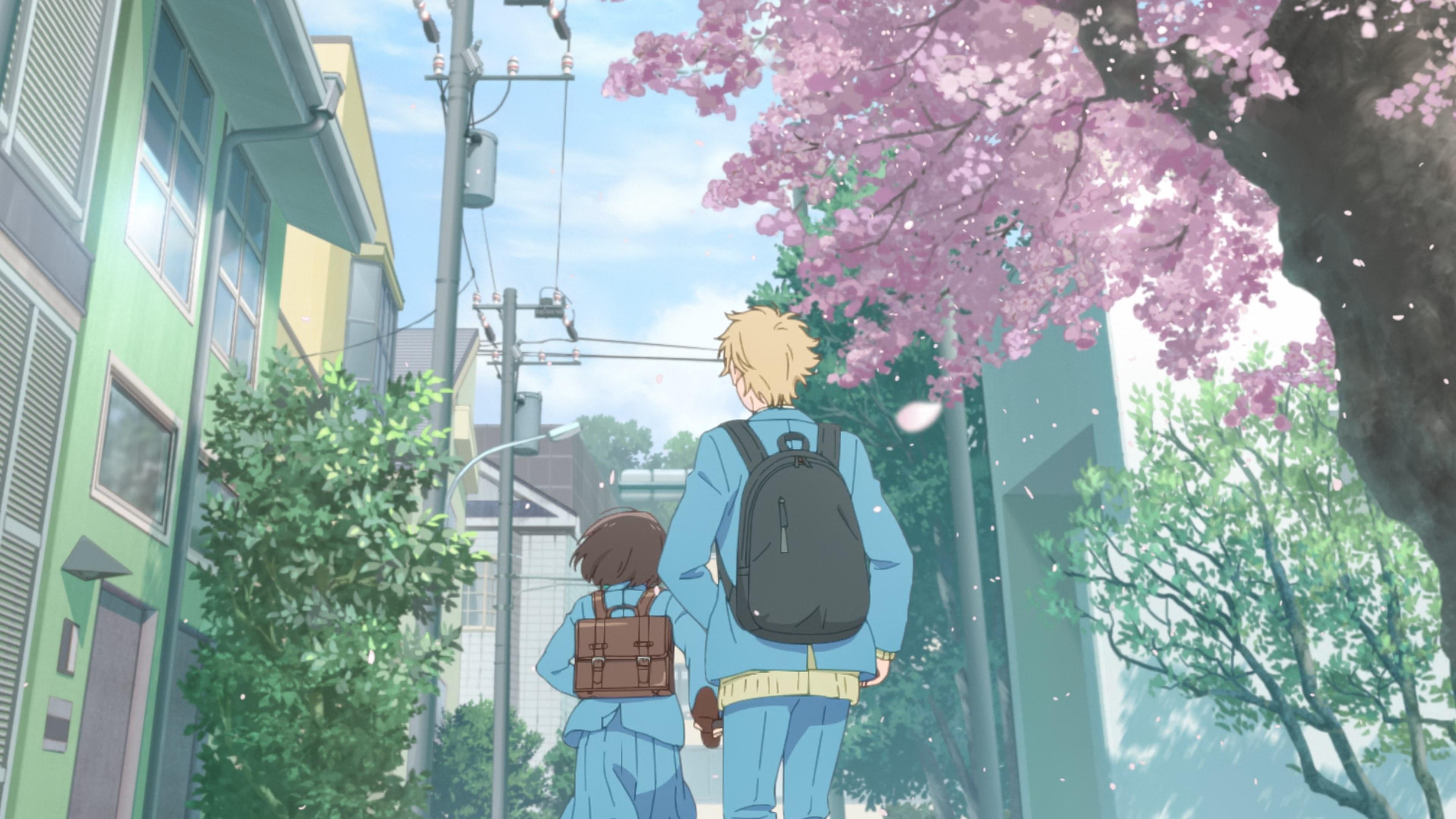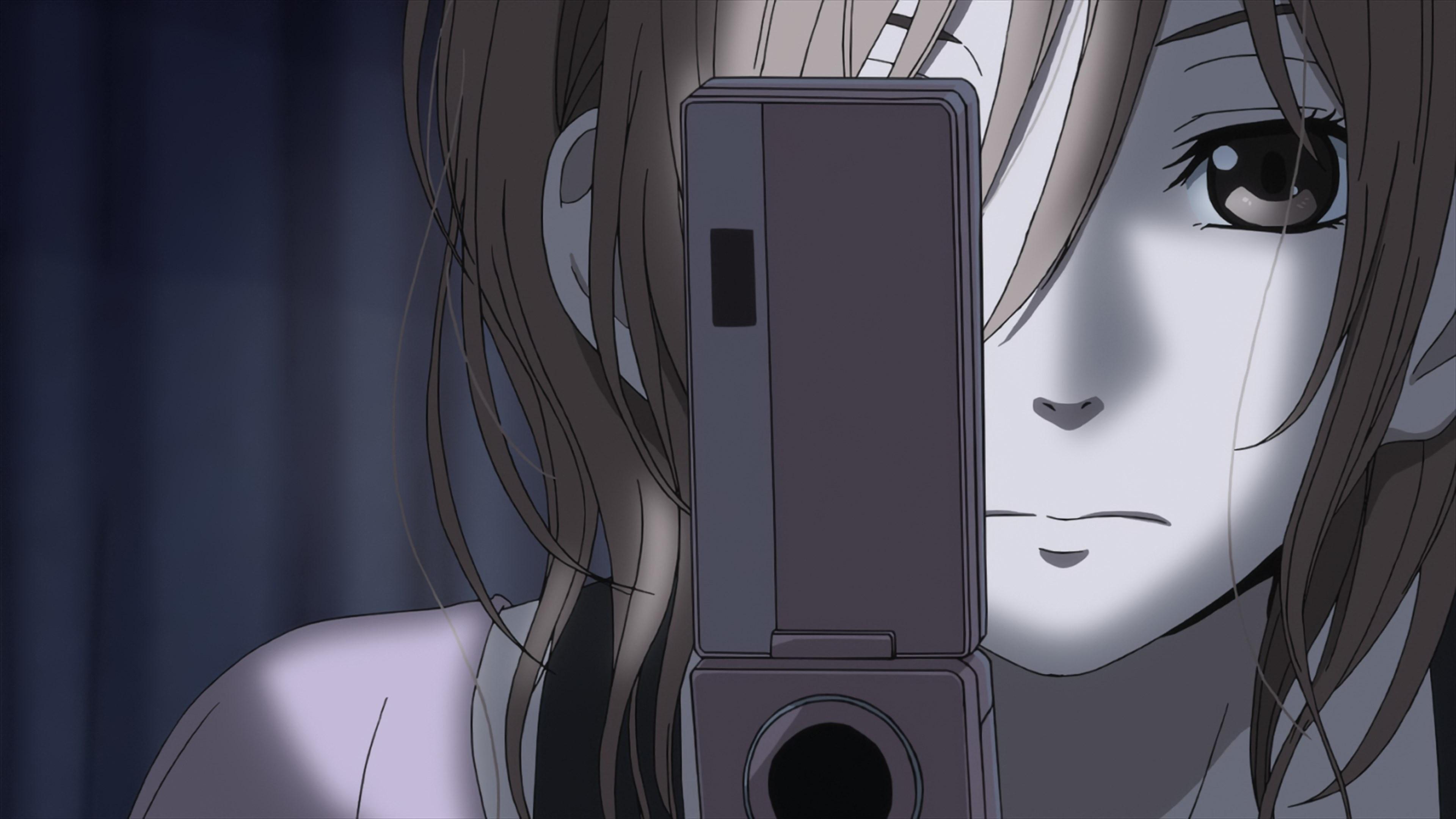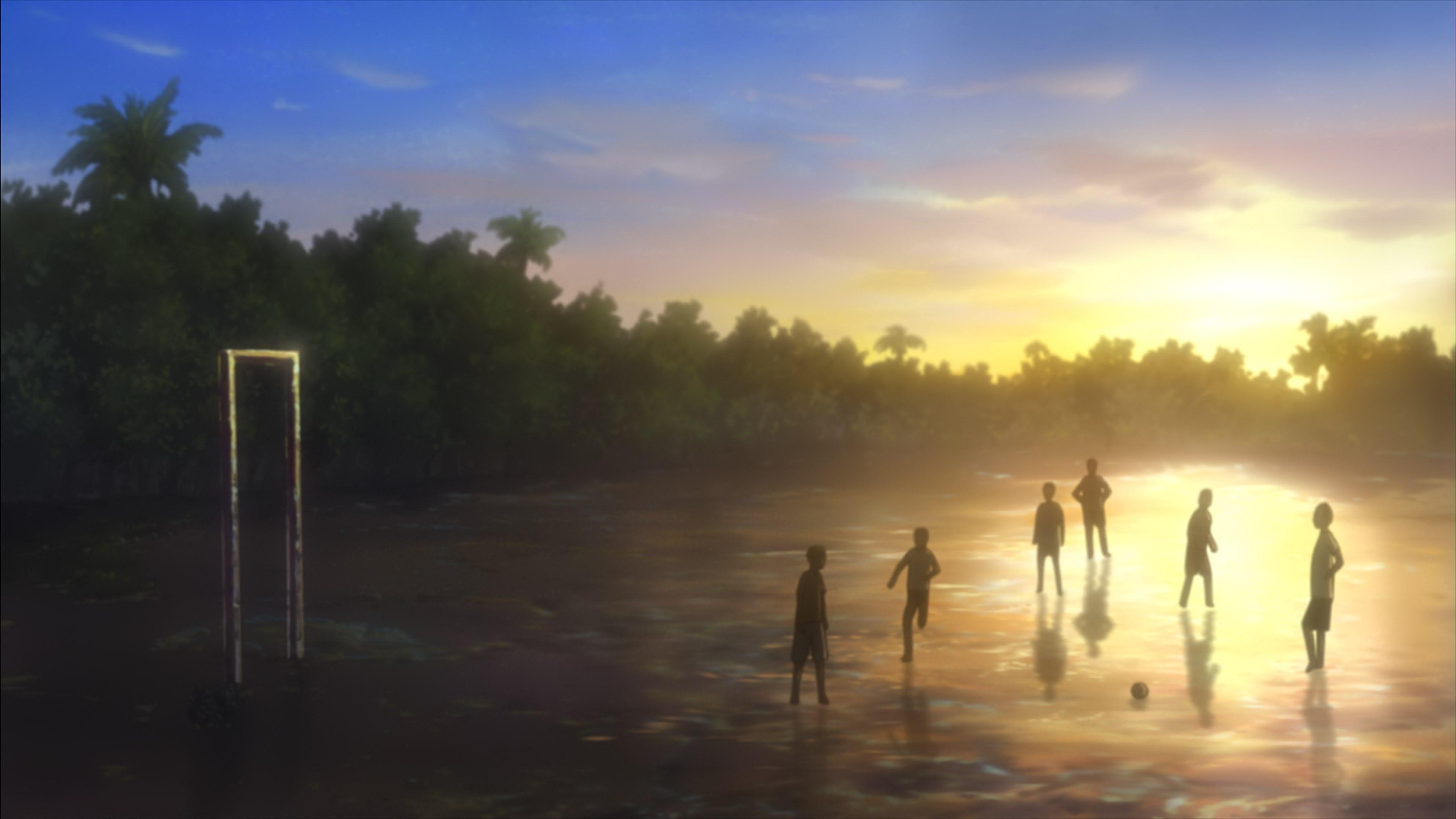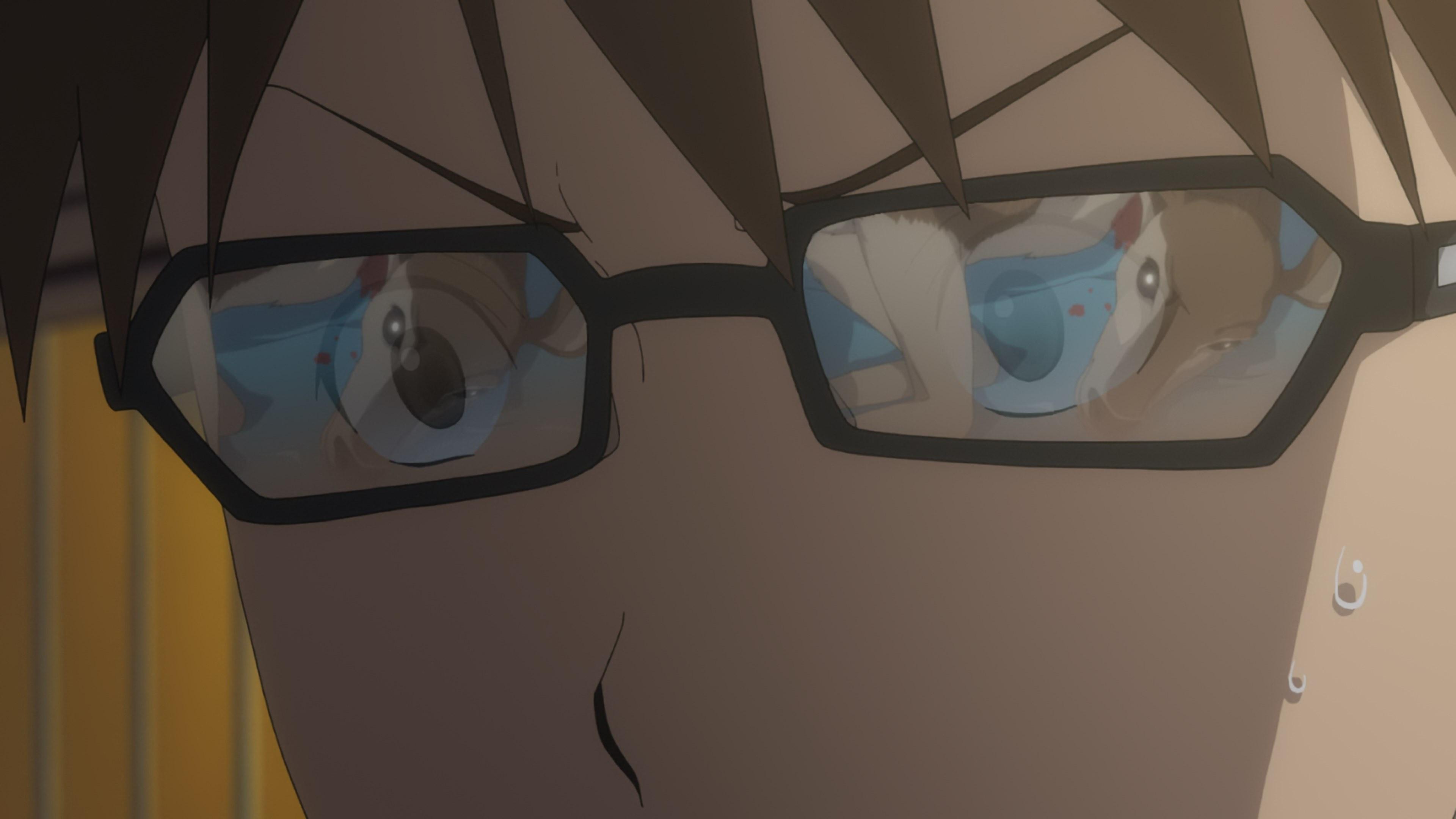
The Low Profile Brilliance Of Kotomi Deai, Or How A Protegee Of Legendary Directors Became Skip And Loafer’s Inconspicuous Director
Skip and Loafer is as pleasant as anime gets. Its director is Kotomi Deai, and this is how she went from being a fan of Shinichiro Watanabe, to collaborating with him and other renowned creators, carving her inconspicuous niche in the industry.
If there’s one thing that all the greatest directors have in common, regardless of the stylistic gulfs that may separate them, is that they’ve got a good eye for interesting creatives. It’s not as if becoming a renowned director magically grants you scouting skills, but rather that short of becoming a one-man army type of artist, there is no way to fulfill your creative potential without surrounding yourself with other strong creative voices, hopefully technically capable ones at that. In some cases, like beloved directors Kunihiko Ikuhara, Shinichiro Watanabe, or the late Osamu Kobayashi, it’s arguable that their greatest skill might actually be that ability to sense and realize potential. They’ve all given platforms to then-unknown artists, some in entirely different fields, and inadvertently launched some of the most interesting careers in anime. Luck and timing are of course important variables beyond anyone’s control, but if you notice a lesser-known creator who consistently plays a role alongside directors of that caliber, chances are that they hold something special.
Now, whether that potential ends up materializing or not is up to an industry that is never particularly kind. Being a protegee of a brilliant mind ensures you nothing, given that even those legendary directors can have issues getting their passion projects approved and not messed with. Some of them burn out before they even have an opportunity to lead a project of their own. Others do end up directing their own shows, but in the process have to trade away the identity and ambition that had put them in the spotlight in the first place. And somewhere in the middle, there are those who never took off as the next visionary director like their mentors, and yet have earned a cult following through works that stick with you even with the restrictions of commercial animation. Kotomi Deai is one such person, and her latest show Skip and Loafer is one of the most delightful titles you can go watch right now.
Before we get to that point, though, it’s worth going through a career that had her alongside many such legends, but also made her aware of the limitations most creators have to face. In interviews like this archived 2016 article from ToonZone, Deai explained that she initially had her sights on film-making, but that it was a certain person’s influence that led her to animation. Years later for Uno Cine, she explored that background more at length. Deai had grown up at the peak of Cowboy Bebop’s popularity, being a bit fan of it herself and by extension of its aforementioned director Shinichiro Watanabe. Though she held an interest in visual storytelling, she didn’t seem to have a clear image of where to direct her career—commercials, promotional videos, actual films, the possibilities were many. As if to guide her, Watanabe publicly announced his next work in 2003: one that he had been ruminating about since 1999, which was being produced at the recently founded studio Manglobe. Realizing that animation was also an option to channel her creative energy, Deai immediately applied and found herself working on her idol’s new TV series Samurai Champloo.
The newcomer Deai was a production assistantProduction Assistant (制作進行, Seisaku Shinkou): Effectively the lowest ranking 'producer' role, and yet an essential cog in the system. They check and carry around the materials, and contact the dozens upon dozens of artists required to get an episode finished. Usually handling multiple episodes of the shows they're involved with. for 6 episodes across the show, more than anyone else across its broadcast. The studio must have noticed her enthusiasm, because by their next major project Ergo Proxy, she was already being trained as assistant episode director and even as storyboarder; first alongside Shukou Murase of current Hathaway fame, then on her lonesome for the introspective episode #11. Across her first few years in directorial roles, Deai already exhibited many traits that remain in her modern works. There are specifics like the usage of silhouettes and backlit figures, or the emphasis on props to suggest interiority, as well as more general precepts about her staging. While Deai will often frame her characters rather starkly, she tends to do it diegetically and with elegance, using elements in the environment to do so; more often than not, that also puts an emphasis on the architecture, another one of her passions.
It’s not just the compositions in her early storyboards that still echo in Deai’s modern work—so does much of her mindset as an episode director. She has stated that her outlook on animation is such that, since it’s all created from nothing in the first place, the possibilities are endless. Deai has proved that she can take that statement to bombastic extremes, but that doesn’t mean she always operates at a high volume of dramatization and abstraction. If anything, she finds herself comfortable in a slightly heightened naturalism. One that applies her eye for color and deceitfully involved compositing to portray nuanced moods and diverse lighting conditions one rarely sees in anime.
For as much as you can already recognize Deai’s current output in her very first attempts at directing episodes, it’s clear that she picked up a lot of knowledge from her illustrious mentors; something she’s still very appreciative of. One of the pivotal projects for her career happened early as 2008, just a couple years into Deai’s directorial adventures. While we know her as a household name now, Sayo Yamamoto was in need of revitalizing a career that might have stalled way too early due to muddy industry politics at Madhouse. Much like Deai, though higher up the ladder, she joined Watanabe for Samurai Champloo and immediately caught the attention of the studio itself. As Yamamoto herself recalls, they asked her to direct a passion project of her own with no strings attached… while Samurai Champloo was still ongoing, such was the impression she had left on them. Years later and fueled by a breakup, she made the trip to Brazil that would inspire Michiko & Hatchin: a parenting series depicting relationships, locations, and cultures rarely ever seen in commercial anime. Very much following Watanabe’s lineage in that way, but with a rebel personality of its own.
Alongside Yamamoto, as the director with a hand in the most episodes behind her, was none other than a young Deai; she tagged in alongside her for the first episode, contributed storyboards, processed those of other directors, led episodes of her own, and even helped on the grand finale. Although her episodes were rarely the most extravagant showcases of animation, she did handle plenty of pivotal moments for the show. Her nonchalantly emotive storytelling rooted Yamamoto’s wild imagination into something very personal and real, making for some of the show’s greatest highlights. You don’t have to take my word for it, but rather just look at how Watanabe himself made her arguably his second in command for his next title Kids on the Slope. As his sole assistant, Deai would again have a direct hand across multiple episodes, starting with the premiere and including fan-favorite moments like episode #07.
In retrospect, it’s easy to see how working with them helped Deai come to her own answer about what animation stands for. That aforementioned belief that its possibilities are limitless rings truer than ever when working under two of the directors with the least regard for conventions about what anime can depict—and also, how it does so. With multiple Watanabe titles under her belt, Deai was able to witness how music doesn’t have to be an addendum to a piece of animation to enhance its story, and instead can be the genesis of it all. Even a specific sequence like Yamamoto’s Michiko & Hatchin opening—which in turn draws from Cowboy Bebop’s iconic Tank!—might very well have fueled Deai’s enduring love for pop-art aesthetics in animation. When working with creators with this distinct of a personality, perhaps it’s harder not to become influenced by them.
It’s no surprise that someone who had worked under such iconic directors, as well as under other renowned names who are about to come up, soon found herself further climbing up the directorial ladder. Given that most viewers aren’t privy to behind-the-scenes machinations, though, the chronology of her ascent to series direction is slightly misunderstood. Tomohiko Ito, with whom she’d worked Michiko & Hatchin as well as his own shows Occult Academy and Sword Art Online, invited her to act as the assistant series directorSeries Director: (監督, kantoku): The person in charge of the entire production, both as a creative decision-maker and final supervisor. They outrank the rest of the staff and ultimately have the last word. Series with different levels of directors do exist however – Chief Director, Assistant Director, Series Episode Director, all sorts of non-standard roles. The hierarchy in those instances is a case by case scenario. for Hiromu Arakawa’s Silver Spoon. Planning an anime and bringing it to fruition is a process that spans multiple years, and sometimes a happy accident like another project of yours becoming a tremendous success can fill up your plate more than you’d expect—hence why Deai had to take over from Ito as the series directorSeries Director: (監督, kantoku): The person in charge of the entire production, both as a creative decision-maker and final supervisor. They outrank the rest of the staff and ultimately have the last word. Series with different levels of directors do exist however – Chief Director, Assistant Director, Series Episode Director, all sorts of non-standard roles. The hierarchy in those instances is a case by case scenario. for the second season of Silver Spoon.
It was also around this time that Deai directed an OVA corresponding to Takahiro Omori’s adaptation of Natsume’s Book of Friends. Though we’re getting a bit too ahead, this is the right time to point out that Deai also inherited the directorial seat for that series, leading its fifth and sixth seasons under Omori’s supervision; while her link to him wasn’t as strong as Ito’s, having only directed one episode of Natsume before, he was also linked to Manglobe at the time so it’s no surprise someone around him would vouch for Deai.
Regardless, Silver Spoon and Natsume do feel like they belong together, and not just because of their chronological proximity and relatively similar circumstances. Together, they illustrate another side of Deai: her willingness to put her ego aside without suffocating her creative drive. Her approach to adaptations isn’t necessarily restrictive, but it is deeply respectful, to the point of putting herself always behind the author; or, like in this situation, behind the author and the original series directorSeries Director: (監督, kantoku): The person in charge of the entire production, both as a creative decision-maker and final supervisor. They outrank the rest of the staff and ultimately have the last word. Series with different levels of directors do exist however – Chief Director, Assistant Director, Series Episode Director, all sorts of non-standard roles. The hierarchy in those instances is a case by case scenario.. This somewhat applies to her approach to individual episode directionEpisode Direction (演出, enshutsu): A creative but also coordinative task, as it entails supervising the many departments and artists involved in the production of an episode – approving animation layouts alongside the Animation Director, overseeing the work of the photography team, the art department, CG staff... The role also exists in movies, refering to the individuals similarly in charge of segments of the film. as well. Unlike many of her mentors, you can slot a Deai outing into right about any type of show without creating any major disturbance, because she has that willingness and ability to adapt. A closer look will always reveal Deai’s warm touch, but she’s not quite like the wildly idiosyncratic directors we often write about on this site. Not because she can’t be—something is definitely coming, or rather rolling—but because she can not be, which is not a mindset all artists can sustain in the long run. Restraint isn’t always easy.
Her quieter role in titles originally spearheaded by someone else doesn’t mean her direction wasn’t very effective however, nor that these weren’t valuable learning opportunities. Both Ito and Omori, for example, happen to be type of director who place great emphasis on the sound; enough that sometimes they won’t appoint a separate sound director to their productions, as they’d rather handle it all themselves. Music was certainly something Deai was mindful of, but after working with them, you could certainly feel a broader awareness of the role of the audio. This manifested directly in the increased musicality of her direction and storyboards, and in turn, this affected how the industry perceived her. Director Hiro Kaburagi knew Deai as she had handled episodes for him on shows like Kimi ni Todoke and My Little Monster, but it wasn’t until 2016 that he made an unusual request for her: handling music selection for his original anime 91 Days—incidentally, the exact type of request that Deai’s idolized Watanabe tends to receive.
Again, referring to those specific projects as learning experiences isn’t an inference on my part, but rather Deai’s own view. In the Uno-Cine interview above, she refers to Silver Spoon S2 in particular as a proposal she accepted while preparing the first project that had been pitched to her as director, essentially grinding for experience in the role during a lengthy pre-production process. The result of those efforts is Rolling Girls, a show that whether you love it or hate it, you’ll find unbelievable—though perhaps understandable if you hear where it comes from. The name Sengoku Basara will either leave you indifferent or make you scream very specific words; if you’re in the former camp, all you need to know is that it’s a series of musou-like games loosely set in feudal Japan, where special units blast through entire armies like they’re demigods. Its spectacle and intensity were very nicely captured in a series of adaptations animated by Production I.G Section 6, featuring individuals like writer Yasuyuki Mutou and animation producer Tetsuya Nakatake.
The inertia of Sengoku Basara’s success had producers pitching an original follow-up, vaguely proposing themes like fighting pretty girls and regional flair to Mutou; which is to say that as usual, it was up to the creatives to make sense out of random marketable concepts. Having recently written for a franchise where foot soldiers get nonchalantly blown away by god-like powers, he wondered about the efforts of the unchosen ones in an extreme scenario like that. By the time Nakatake—who had co-founded Studio WIT in the meantime—got Deai on board, more concepts like bikes and road trip had been added to the mix already. And with her around, the density of ideas only skyrocketed.
Given Deai’s Watanabe pedigree, it’s unsurprising that a series of covers from 80s punk rock band The Blue Hearts became a key part of the series, inseparable from its identity and bearer of its messages. But above everything else, she deserves credit for fostering an environment where everyone on the team would never stop pitching their ideas; something they treasure very dearly still, despite the headaches that managing a project like that involves. Many viewers will remember the gorgeous, uniquely defined 2D effects that action director Arifumi Imai came up with, or the radically diverse art direction, with the likes of Eriko Shibayama and Ryou Kouno contributing the type of stunning painting you’re most likely to see as concept art than as an actual element in a show. Some might still recall major points about its crazy setting, which the show would nonchalantly skim over. Even fewer will remember side characters with crocodile masks, perfect communication through motorcycle sounds, or koalas who spend their entire lives attached to someone’s arm without anyone bringing it up. What no one will ever forget, though, is that Rolling Girls is packed to the brim with original ideas. Deai said animation could do anything, and that it did.
Deai mentioned that even years later and in unrelated productions as WIT, she still notices Rolling Girls team members sneaking in lookalikes from its cast that they remember fondly. What she didn’t point out, though, is that a certain animator from the team who has gone on to become a popular ace in shonen action titles outright changed his name into that of a character in the show—because they were similar, and why not, because she’s cute. Godspeed, Yukina Kosaka.
At the end of the day, it’s hard to give a blanket recommendation to Rolling Girls for those who haven’t seen it yet—and yet, I can’t bring myself to wish that the show had panned out any differently, production struggles aside. Much like the preceding project that inspired it, Rolling Girls is set in a Japan of warring factions led by their respective Best, tremendously powerful individuals supported by the Rest. A more standard story might have followed those leaders, or if the focus was put on the mobs as Mutou always intended, perhaps it would have rewarded their hard work with equally extraordinary power. Instead, Rolling Girls’ episodic adventures have the main four characters witness conflicts much grander than themselves, valuing their small contributions for what they are.
There is no denying that the spectacle that sold the experience was uneven, and that the team’s desire to do so much left some parts undercooked. Rolling Girls is demonstrably unfocused, almost by design, and yet it’s a unique show that I feel is easy to grasp. It started from an idea of sympathy for nameless people who do their best to support others, and once every month, the account of this niche series stills tells people to keep at it. That’s what Rolling Girls set out to convey.
For the people who did connect with such an unconventional show, or at least saw the potential of Deai’s imagination within it, a quick look at her resume since then might be a bit depressing. Leaving aside those Natsume seasons she inherited, Deai didn’t lead a single project again until this year. The episodes she has storyboarded as a guest for other directors have kept a mostly low profile, save for the already highly idiosyncratic shows she did get invited to; her tag team with Rolling Girls designer Katsuhiko Kitada for Flip Flappers #09 and her contributions to GREAT PRETENDER being some of the clear standouts. But is a very occasional flare-up of personal expression really enough for someone who’s shown appreciation for the possibilities of animation, and actually gotten a good taste of it with Rolling Girls?
Here is where I admit we’ve skipped over one very important part of Deai’s career, one that might explain why she’s content with the way things are. Back in her early Manglobe days, a new type of request landed on Deai’s lap during the production of The World God Only Knows: directing and storyboarding its opening sequences. Unpolished in spots as they may have been, she succeeded at matching their unusual beat to thematically appropriate motifs, and did so using tools—like the VFX and colorful palette—that she personally fancies. And so for the next decade, Deai made a name for herself in this specific field by directing dozens of opening and ending sequences, ranging from simple illustrations that exploit her love for pastels to more involved intros full of simple joy and quirky animation. When asked about what she enjoys storyboarding, Deai put her fondness of these sequences in very simple terms: they’re fun, because so much is left up to her own choices. In a way, they might have been the outlet for creative impulses the industry isn’t consistently giving her otherwise.
With all this context about Deai’s career, we’re all better prepared to understand the lovely Skip and Loafer adaptation that she is leading not just as the director, but also as the series composer. Given her modesty in projects of this nature and the fact that she was a big fan of the source material to begin with, the anime was never going to be a radical departure. As exciting as clearly transformative adaptations can be, though, there’s something fascinating about those that appear to be doing essentially the same thing and still come across as a thoughtful enhancement of the original work.
Skip and Loafer is a fundamentally kind work that wears its heart on its sleeve, and Deai set out to meet it with just as much honesty. Its tale follows country bumpkin Mitsuki Iwakura as she moves to Tokyo to attend a prestigious high-school. Though in her mind this is the first step towards the grand plan of revitalizing her hometown and left-behind rural locations in general, a high school debut is on its own a mundane thing. And yet, to kids that age it feels like a massive deal, so you can taste the feeling of trepidation in this gorgeous preparation sequence Deai added; incidentally, animated by star guest Saki Takahashi, quickly showing that the team did a nice job capitalizing on the talented women who already liked the series. This idea of depict events with the gravitas they have for them rather than through cold, objective realism also applies to a pivotal moment in this first episode. The musicality of Deai’s direction is in full display as she matches the increasing tempo of the music to that of the characters running, but most importantly, you can see how this silly event illuminates Mitsumi’s natural magnetism to others.
The anime’s presentation isn’t just beautiful, but also coherent and purposeful. It’s easy to pick up on the exceptional color design, handled by the same Yuko Kobari whom Deai relied on for Rolling Girls. It’s frankly a given that a show conceptualized by Deai will have a colorful, fitting palette, but what you can’t take for granted is other directors properly using that as another storytelling tool. Deai’s assistant Yuriko Abe opens up the second episode by giving color, and maybe more importantly substracting it, from a poignant scene; the gazes on Nao-chan’s secondary sex characteristics are borrowed from the original work, but the way Mitsumi nonchalantly drags her from the somber stares into the show’s usual pleasant palette is a beautiful moment of expression for the anime. This goes hand in hand in small changes even in the writing department, including the way Mitsumi’s own narration introduces her in the first episode. It all feels thoughtful and considerate of its own characters.
Avid fans of the source material might have noticed that the very popular opening, of course directed and storyboarded by Deai herself, is based on a chapter cover from the manga. The way she derived an entire charming dance routine out of it that feels so in-character sums up that great ability to interpret someone else’s work.
After two dazzling episodes, the anime has settled into a much more conservative relationship with the manga’s original panels—something that tends to spell doom for anime adaptations, as it’s become synonymous with lifeless, restrictive takes. This overlaps with a production effort by studio P.A. Works that remains sturdy in a way their modern works haven’t necessarily been, but also mostly lacking in the beautiful bursts of energy the earliest episodes had. Even with these limitations, though, Skip and Loafer’s adaptation always feels additive, complementary.
If I had to sum up what fundamentally sets it apart from other seemingly super faithful adaptations nowadays, it might come down to the process of interpretation that Deai’s team has clearly done. There is no denying most shots come straight from a page of the manga, but those are rarely widescreen compositions, so there’s an inherent change in the presentation. As a black-and-white work where the reader sort of sets their own pace, the director—and series composer, also Deai’s job—of a manga adaptation is constantly in that process of interpretation as well. And that’s where someone like Deai can shine without making a big spectacle about it: in the small information that is being added to the frame, in the interpretation of the lighting conditions and how that defines the mood, in Tomoyo Kurosawa’s goofy but still somewhat naturalistic delivery as Mitsumi, in all these small things that make Skip and Loafer feel right.
In a conversation between Deai and original author Takamatsu Misaki that you can read over here, or translated here, the interviewer inadvertently makes one of the best points by noting that the colors of the anime never put them off at all. This lack of friction isn’t just because the palette is very soothing, which it is, or because it oftentimes becomes a storytelling tool in and of itself, which it does. The reason why they feel so natural is once again because Deai has been able to interpret the type of palette implied by the original work; not by copying what she saw in the color covers, but by deriving it from its worldview. And, despite thinking that she’s putting her ego aside in the process, directors as distinct as her always end up leaving their personal flair in the way they reach their goal. In that same interview, Deai explains she had the team studying the work of photographer Hideaki Hamada, whose focus on the everyday and fresh-feeling tint felt like they captured the same vibe the manga was going for—a Deai-like view if I’ve ever seen one.
While it would certainly be nice if Deai was allowed to rampage freely like she did on Rolling Girls, especially given how fond she is of that experience and the freedom she’s granted for opening and ending sequences, the truth is that she’s adapted to the realities of the industry better than most. As long as she has some escape valves, she can push her creative ego aside to amplify other people’s worldviews; even though, as we’ve seen over and over, the way she achieves that still underlines her personal preferences and the influences of all the legends she matured around. No matter what, Deai’s work is dyed by her beautiful colors.
Support us on Patreon to help us reach our new goal to sustain the animation archive at Sakugabooru, SakugaSakuga (作画): Technically drawing pictures but more specifically animation. Western fans have long since appropriated the word to refer to instances of particularly good animation, in the same way that a subset of Japanese fans do. Pretty integral to our sites' brand. Video on Youtube, as well as this SakugaSakuga (作画): Technically drawing pictures but more specifically animation. Western fans have long since appropriated the word to refer to instances of particularly good animation, in the same way that a subset of Japanese fans do. Pretty integral to our sites' brand. Blog. Thanks to everyone who’s helped out so far!





As a hardcore Rolling☆Girls fan, I actually cried a bit reading this article. Thank you kVin!
Heartfelt Thank you for this article <3
i was wondering why skip & loafer was giving me such gin no saji vibes visually as well as tonally, so this explains a lot! wow, deai really has been everywhere, i’m seeing so many favorite episodes of shows i’ve watched and enjoyed popping up among the examples of her work. thanks for the writeup as always!
Great article! Talking about directors, is there any way to find out who is mainly responsible for an individual scene in anime? Probably a stupid question, but an episode director should have more creative control over a single scene than the overall director, right? But is the episode director then in charge of every scene within their delegated episode or are there others like storyboarders who have more creative control over one scene? I´m asking because im interested in analyzing individual scenes from anime but i only want to give credit where credit is due. So is there a way… Read more »
Short story: anime episodes are meant to be storyboarded by one person, have an episode director (who may be the storyboarder), and then of course undergo supervision by the series director. A scene of course fundamentally involves the work of a writer and animators too, but the former rarely have very precise input about the staging and such, while the latter do but in a more technical sense. It depends on exactly what about the scene has spoken to you, but those are likely the main figures behind it. Slightly less short story: It’s a mess, especially nowadays. Multiple storyboarders… Read more »
Very insightful, thanks! That clears things up. It´s a pity, but i guess i´ll have to leave this thought behind then since it´s too unclear.
(if you´re curious: i was referring to a scene in Shin Wakabayashi´s Attack o Titan Episode)